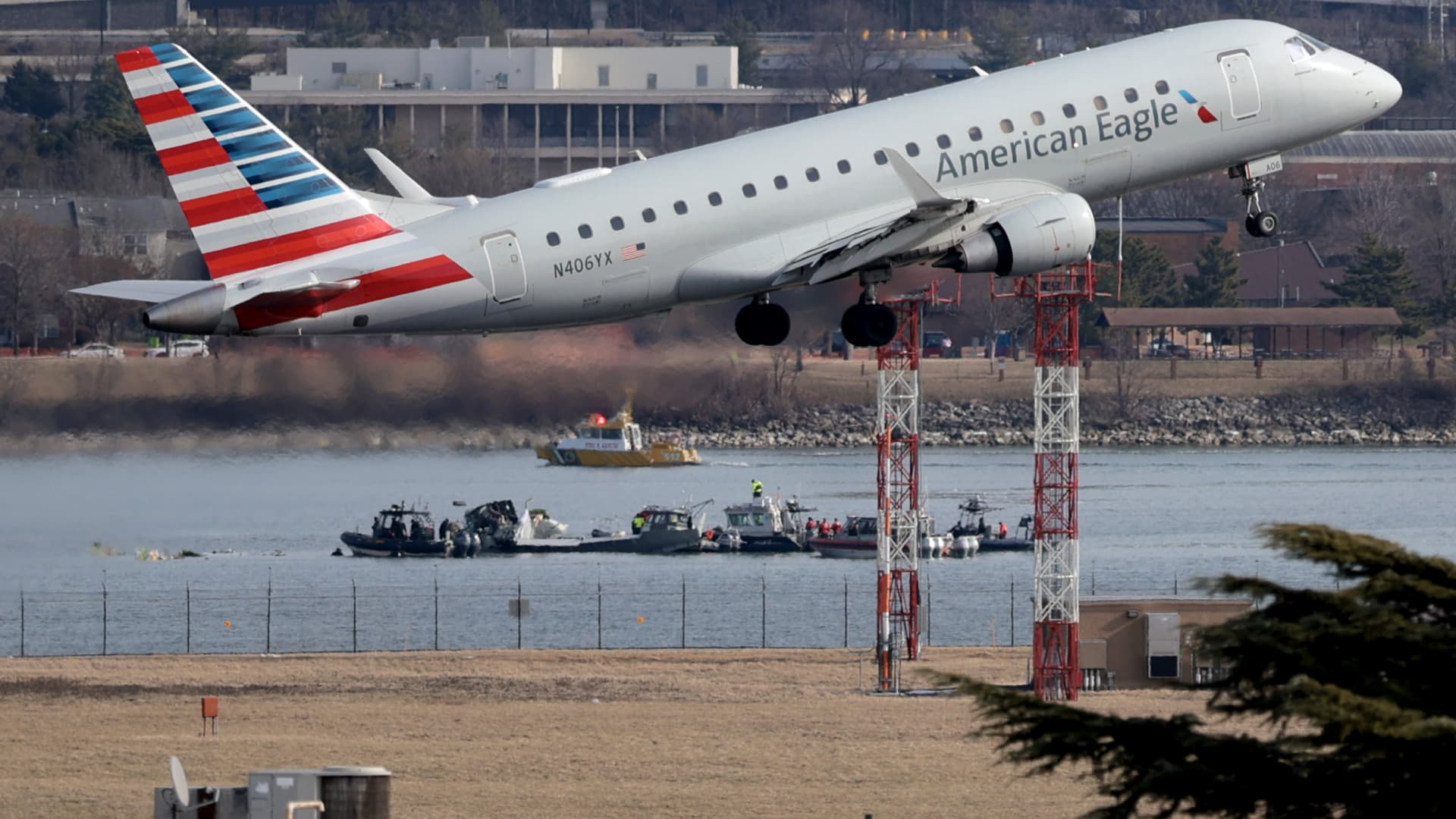Rescue Efforts Underway Following Collision Between Military Helicopter and Passenger Aircraft Near Washington, D.C.
In a tragic turn of events that has captured national attention, rescue teams are actively responding to a mid-air collision near Washington, D.C., involving a U.S. Army Black Hawk helicopter and American Airlines Flight 5342—a Bombardier CRJ700 operated by PSA Airlines. This catastrophic incident, which occurred on January 29, 2025, marks the first significant commercial aviation disaster in the United States since 2009, and officials warn that rescue operations may be hindered by extreme cold weather conditions.
Incident Overview and Timeline
The sequence of events unfolded rapidly as the aircraft approached Reagan National Airport. American Airlines Flight 5342, en route from Wichita, Kansas, was scheduled to land around 9:00 p.m. However, just minutes before its expected arrival, emergency calls began pouring in at approximately 8:53 p.m. D.C. police received reports of “an aircraft crash above the Potomac River.” Subsequent investigations confirmed that the regional jet had collided with a U.S. Army Black Hawk helicopter that was operating as part of a training mission.
According to the Federal Aviation Administration (FAA), the collision occurred as air traffic controllers had directed the military helicopter to execute a maneuver—passing behind the approaching jet—in an effort to maintain safe separation. The pilot of the helicopter had confirmed visual contact with the jet and had requested additional separation; however, mere seconds later, communications within the control tower shifted from routine to one of shock and urgency as the collision unfolded.
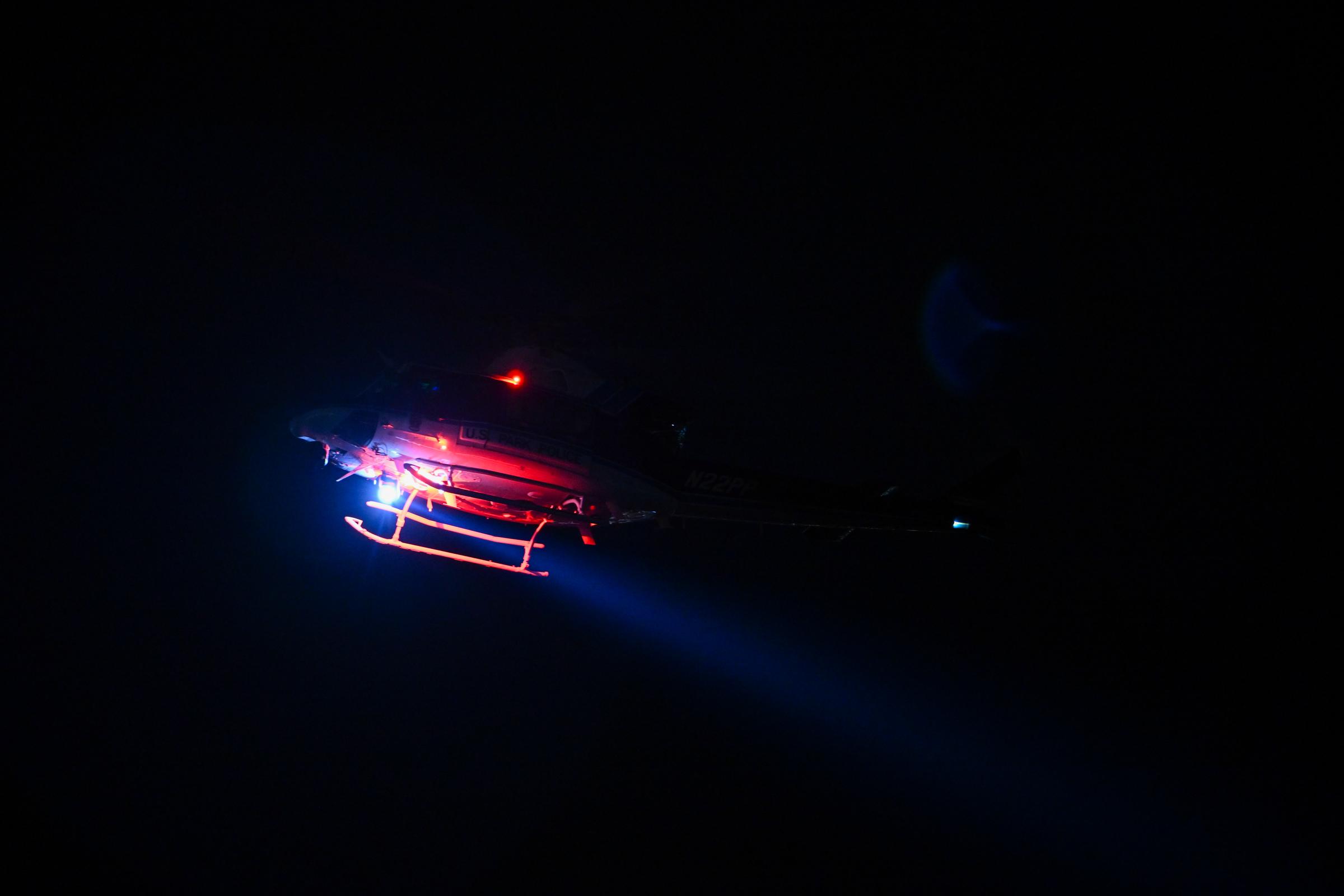
A video captured by EarthCam appears to document the moment of impact. The footage shows the two aircraft colliding mid-air, followed by an eruption of flames. Eyewitness Ari Schulman, who was driving home at the time of the incident, described the final moments of the jet in vivid detail. “I could see the underside of it,” Schulman recalled. “It was lit up a very bright yellow, and there was a stream of sparks underneath it.” According to Schulman, moments later the sky abruptly darkened as the aircraft banked sharply and began to descend toward the Potomac River.
The Scope of the Disaster
This mid-air collision has not only disrupted air traffic in one of the nation’s busiest airspaces but also prompted the immediate diversion of 19 flights to Dulles International Airport. With Reagan National Airport temporarily closed—FAA officials have announced that the facility will remain closed until at least Friday at 5:00 a.m.—the incident has had widespread repercussions across the region.
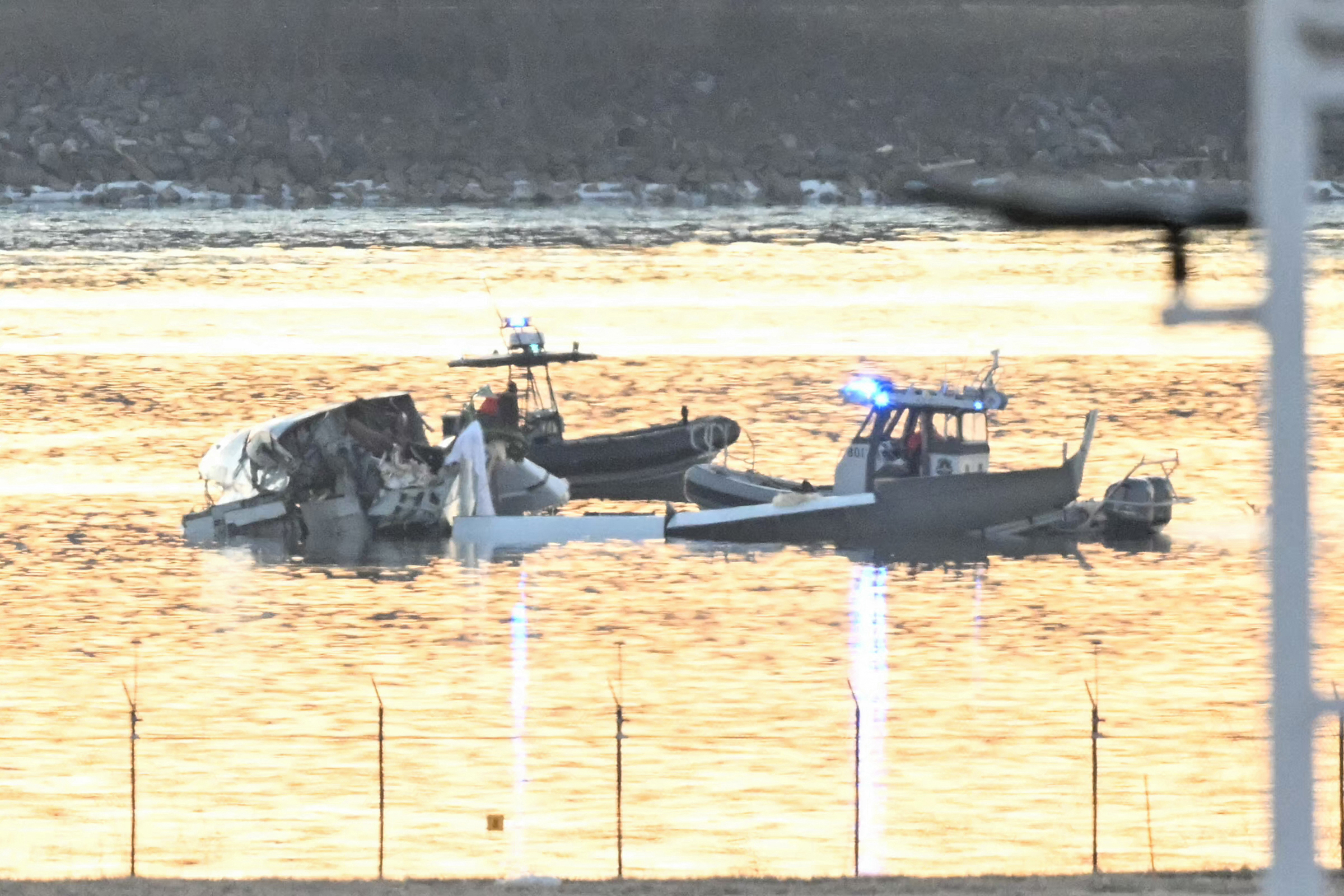
The American Airlines flight, carrying 64 passengers and crew, and the military helicopter, with a crew of three, have both crashed into the water. Washington, D.C. Mayor Muriel Bowser confirmed during a press conference on January 30, 2025, that “both aircraft are in the water” and emphasized that the immediate focus of all emergency personnel is on rescuing survivors. “The focus now is rescuing people, and that’s what all of our personnel are focused on,” Mayor Bowser stated, underscoring the gravity of the situation and the urgency of the ongoing search and rescue efforts.
Rescue Operations and Environmental Challenges
Rescue operations have been complicated by the severe weather conditions prevailing in the area. With temperatures near freezing and strong winds battering the crash site, emergency crews are working against the clock. D.C. Fire and EMS Chief John Donnelly described the situation as “a highly complex operation,” noting that the Potomac River’s water depth is approximately eight feet, with additional hazards posed by floating ice and rapidly shifting weather conditions.
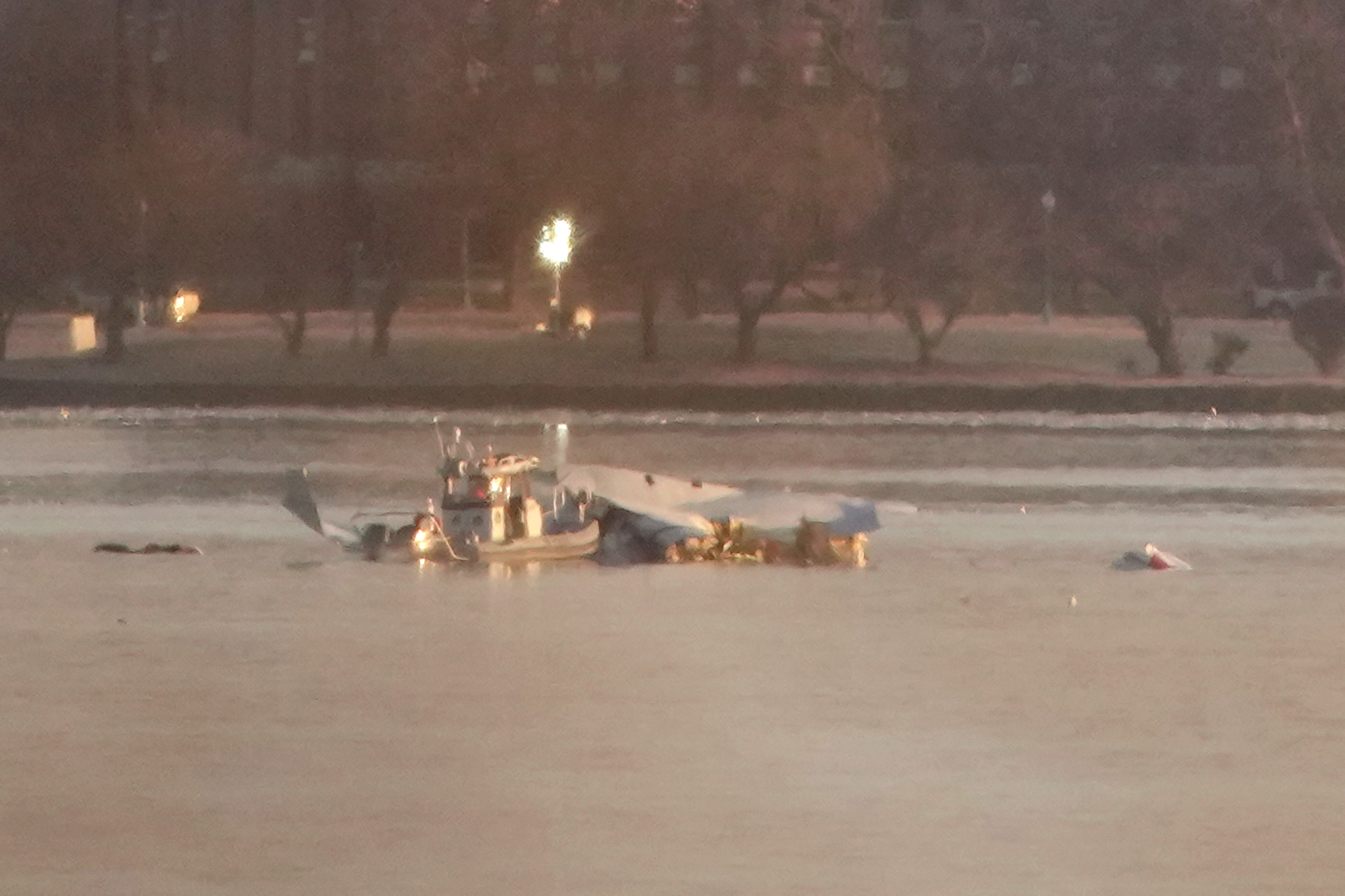
Rescue teams, including nearly 300 first responders, are navigating dangerous conditions as they attempt to recover survivors and search for evidence. Helicopters and rescue boats have been deployed, with searchlights scanning the darkened waters of the Potomac River. The extreme cold—reported to be around 35 degrees Fahrenheit—is particularly concerning. Experts warn that such low temperatures significantly increase the risk of hypothermia. In these conditions, victims may experience cold shock, causing gasping and hyperventilation within seconds, followed by a rapid loss of dexterity. Unconsciousness could occur within 15 to 30 minutes, with survival times estimated between 30 and 90 minutes, underscoring the urgency of the rescue efforts.
In addition to local emergency services, the FBI’s Washington Field Office dive team has joined the recovery operation. Specialized agents from the Underwater Search and Evidence Response Team (USERT) are working in the treacherous conditions, tasked with navigating the challenging environment to recover any potential evidence that may shed light on the causes of the collision.
Eyewitness Accounts and Community Impact
Eyewitnesses to the disaster have provided harrowing accounts of the events as they unfolded. Ari Schulman, one of the observers, described the moment he witnessed the jet’s final approach. “The aircraft was flying at roughly 120 feet above the water when it suddenly banked sharply—more than 90 degrees,” he recounted. His description painted a picture of a seemingly normal flight that rapidly turned catastrophic. Schulman’s account has resonated with many who witnessed the event, contributing to a growing archive of firsthand testimonies that officials hope will assist in the investigation.
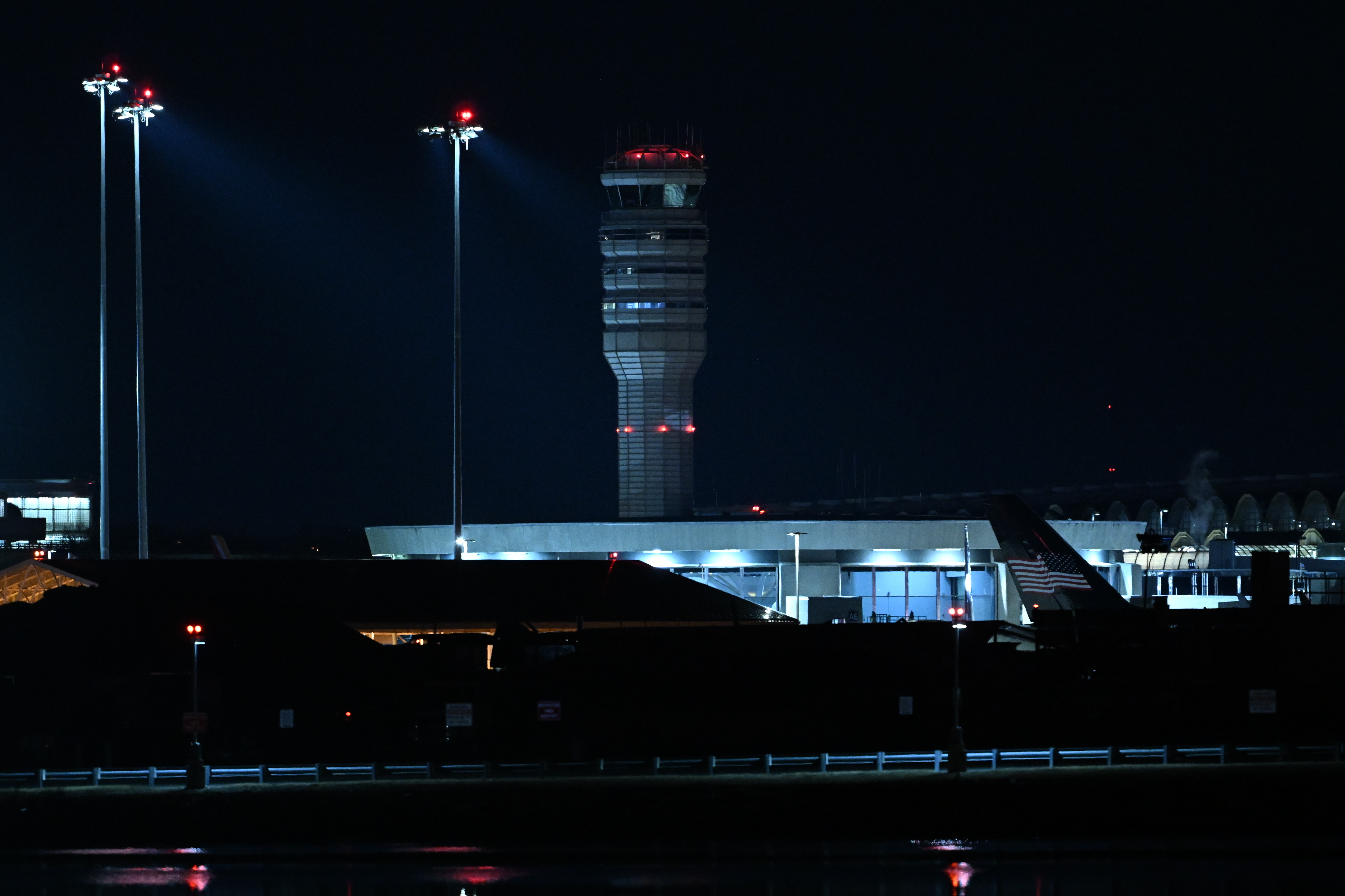
Another local resident, Abadi Ismail, recorded a video on his smartphone, capturing rescue helicopters circling the crash site over the Potomac River. Ismail described hearing “two unusual bangs, something I’ve never heard before,” comparing the sound to what he described as reminiscent of a warzone. “I rushed to my window and saw a faint trace of smoke at first,” he said. “Then, rescue helicopters and boats lit up the area as teams mobilized to search the wreckage.” His account not only provides a window into the chaotic scene but also highlights the collective shock experienced by the community.
The emotional impact of the crash is profound. Families of the passengers and crew members, as well as members of the military community, are reeling from the incident. Metropolitan Washington Airports Authority CEO Jack Potter noted that many individuals who had gathered at Reagan National to pick up loved ones were now left in a state of limbo. “Families have been directed to a designated support center where counselors are available,” Potter explained, emphasizing the importance of providing both practical and emotional support during this crisis.
Among those deeply affected is Hamaad Raza, a resident who lost contact with his wife moments before the crash. “I’m just praying that someone is pulling her out of the river right now,” he said during an interview, his voice filled with anguish and hope amid the uncertainty.
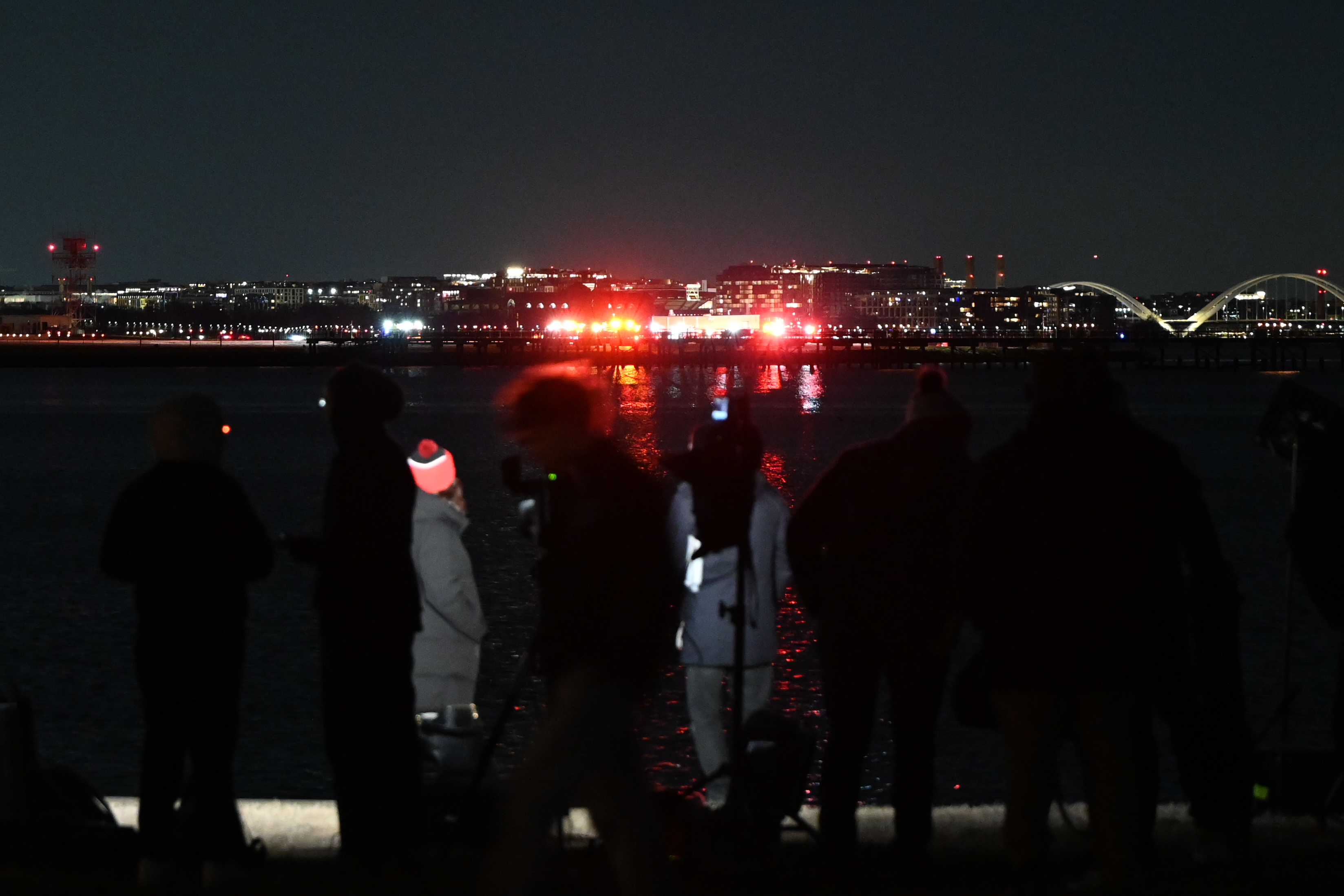
Furthermore, the tragedy has touched various communities on multiple levels. Several members of the U.S. figure skating community were on board American Airlines Flight 5342, adding another layer of personal loss to the public outcry. Kansas Senator Jerry Moran, speaking at a media briefing, described the incident as “a very personal circumstance” for his state, noting the deep connections many Kansans share with those on the flight. His comments underscore the far-reaching impact of the disaster, which has not only disrupted air travel but also left an indelible mark on the hearts of communities across the nation.
Impact on Air Traffic and National Aviation History
The mid-air collision near Washington, D.C. has far-reaching implications for the aviation industry, as it represents the most significant commercial aviation disaster in the United States since the 2009 crash of Colgan Air Flight 3407 near Buffalo, New York—a tragedy that claimed 49 lives. Additionally, other notable incidents, such as the 2013 Asiana Airlines crash in San Francisco and a 2018 Southwest Airlines incident resulting in a fatality, serve as grim reminders of the potential risks inherent in air travel. This recent accident has prompted renewed scrutiny of aviation safety protocols and emergency response measures.
Air traffic controllers, who are central to maintaining the safety of the national airspace, are now facing intense review of their procedures following the incident. The moment just before the collision, when a controller directed the military helicopter to maneuver behind the approaching jet, is under close examination. Recordings from the control tower reveal a dramatic shift from routine communication to expressions of disbelief as the collision unfolded. Investigators are currently analyzing these recordings to determine whether any lapses or miscommunications contributed to the disaster.
Reagan National Airport, one of the nation’s busiest airspaces, has been forced to shut down temporarily as a precautionary measure while authorities conduct a thorough investigation. With 19 flights already diverted to Dulles International Airport, the disruption in air travel is expected to have a ripple effect on national and international flight schedules. As the investigation unfolds, aviation experts anticipate that the findings may lead to significant changes in operational procedures and safety regulations aimed at preventing similar tragedies in the future.
The Ongoing Investigation and Future Implications
The National Transportation Safety Board (NTSB) has been designated to lead the investigation into this catastrophic event. The NTSB’s inquiry will focus on several critical aspects, including the mechanical integrity of both the passenger jet and the military helicopter, the decision-making processes of the pilots, and the communication protocols between air traffic controllers and flight crews. Additionally, investigators will analyze environmental factors—such as the extreme cold weather conditions—which may have affected both the flight operations and the efficiency of rescue efforts.
Defense officials are also collaborating with the NTSB to understand the specifics surrounding the Black Hawk helicopter’s mission that night. Although the helicopter was known to be part of a training operation, questions remain regarding its departure point and the precise sequence of events leading up to the collision. This joint investigation between military and civilian agencies underscores the complexity of the incident and the necessity for a comprehensive review of all contributing factors.
In light of the severity of the accident, industry experts predict that the findings from the NTSB investigation could catalyze significant changes in both commercial and military aviation procedures. With the safety of millions of passengers and service members at stake, regulators and airlines alike are bracing for potential overhauls in safety protocols, emergency response strategies, and training programs for pilots and air traffic controllers. This incident serves as a stark reminder that even in an era of advanced technology and rigorous safety standards, the risks inherent in air travel remain ever-present.
Community Response and Calls for Unity
In response to the tragic incident, local officials and community leaders have called for solidarity and support among affected families and residents. Washington, D.C. Mayor Muriel Bowser has urged the community to come together during this difficult time, emphasizing that rescue operations and subsequent recovery efforts depend on a united and resilient populace. A citywide prayer vigil has been scheduled for January 30, 2025, at noon in the Wichita City Council Chambers, where community members are invited to join together in support of those impacted by the crash.
The emotional toll of the disaster is evident not only in the immediate rescue operations but also in the long-term impact on the families of those involved. With counselors now available at designated support centers, authorities hope to provide much-needed psychological assistance to individuals grappling with grief, uncertainty, and trauma in the aftermath of the accident. As communities across the region rally together, there is a collective call for accountability, enhanced safety measures, and a commitment to ensuring that such a tragedy is never repeated.
Final Thoughts
The collision between American Airlines Flight 5342 and the military helicopter near Washington, D.C. stands as a somber milestone in U.S. aviation history. With the first major commercial aviation disaster since 2009, the incident has not only disrupted travel and daily routines but also ignited a nationwide dialogue about the state of aviation safety, emergency preparedness, and the human impact of such tragedies.
As rescue teams labor under extremely challenging conditions—battling subfreezing temperatures, rough waters, and hazardous environmental factors—the urgency of locating survivors and recovering critical evidence cannot be overstated. Meanwhile, investigators from the NTSB, in collaboration with military and federal agencies, are leaving no stone unturned in their quest to determine the causes of this devastating collision. Their findings are expected to play a pivotal role in shaping future aviation policies and safeguarding the lives of passengers and service members alike.
In the days to come, as details of the investigation unfold and families begin to receive the support they desperately need, the incident will undoubtedly serve as a turning point for the aviation industry. The lessons learned from this tragedy are poised to drive advancements in technology, training, and communication—ensuring that the safety of our skies remains paramount.
For now, the nation stands in solemn solidarity with those affected by this heartbreaking disaster. As rescue and recovery efforts continue, the commitment of emergency personnel, federal agencies, and community leaders serves as a powerful reminder that in the face of unimaginable tragedy, unity, resilience, and a shared dedication to safety can help heal even the deepest wounds.
Stay tuned for further updates as authorities provide additional details and the investigation into this tragic mid-air collision progresses.
